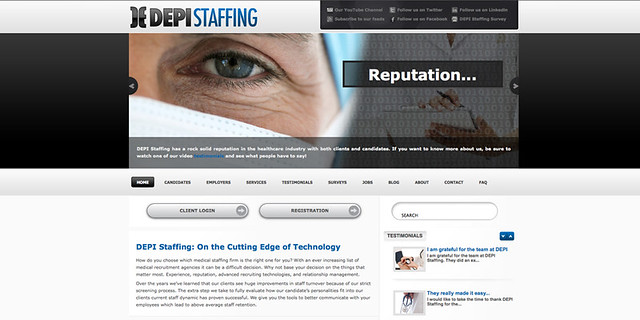Instead of outsourcing your website creation duties to some company out there, you can instead learn the exact same skills and become the person that other people seek to help them build websites. While at first glance it may seem complicated, the reality is that it is among the simplest skills to learn. Read this article to gain some fantastic information.
Help your visitors navigate your page via fixed position navigation. This will make sure the navigation panel is locked in place as your readers move throughout the site. This isn’t just great for a visitor, you can also help out Internet marketers because it allows visitors to have an easier time doing an action like buy products or sign up to get a newsletter.
Don’t use frames. It isn’t the 90’s anymore. Frames were terrific in the burgeoning web page design days, but they had their problems too. Designs on frames can make it hard for people to get your site bookmarked and they won’t like scrolling either. You can use much simpler methods to allow your users a way to navigate your content.
Aim for page loading times of under 10 seconds. A good site will appear before a visitor’s eyes within moments. Most people who use the Internet want instant gratification, so it is best that your website provides it.
Creating a newsletter can help you get repeat visitors. Allowing your customers to sign up for updates or important events can have them coming back for more. Your website’s sidebar is an ideal location for the signup form, and you should make certain to stay on top of who has registered. Make sure you only send out the letter to those that have explicitly requested to view it.
Know your subject. If you’re planning to use your website for blogging or something similar, make sure to thoroughly research the subject prior to posting. Providing bad information will only lose you readers. Understanding your subject is the key to a good blog.
Make sure to ensure priority of your user’s needs. You as a web designer have to think about the needs of the end user all the time. This includes the ease of interaction, level of usability, accessibility, and experience of the user. Always prioritize your visitors. Visit your site to see how easy it is to navigate.
Get in the habit of testing early and often. It’s imperative that you employ usability tests frequently to ensure a pleasant user experience. Keep testing and improving as the design nears completion.
Create a comprehensive “About Us” page. Most websites don’t have very interesting copy in this area. Try to make yours interesting! Provide some insight for your visitors; tell them how and why you built your site and what goals you want it to reach for your company.
Website counters were popular in the 90s but are rather unattractive now. It may look like you’ve added something neat to your site, but many visitors do not wish to see that. Get rid of visitor counters and encourage social media interaction instead.
You don’t have to design your site alone. Great website creation incorporates many different skills, including graphic design, programming, SEO, and the creation of memorable content. It’s common to outsource some of this work, so don’t feel ashamed to do so. You can always resort to hiring a website development company to finish any tasks you’re unable to do on your own. You can even ask them for advice as they do it so you can take it over and do it yourself next time.
A website’s design is never done. It’s important to actively monitor, adjust and update your site. It will not be necessary to continually make updates, but you should do so fairly regularly. This is important if you have content that includes videos, a podcast or articles. Unfortunately, creating updates to a website is not quite as easy as just throwing up a fresh blog. This task requires effort.
The coding that comes with designing a website makes people think the process is hard. As you can see now, there isn’t that much to it. Use this information you’ve read to design a site easily that can impress anyone.
